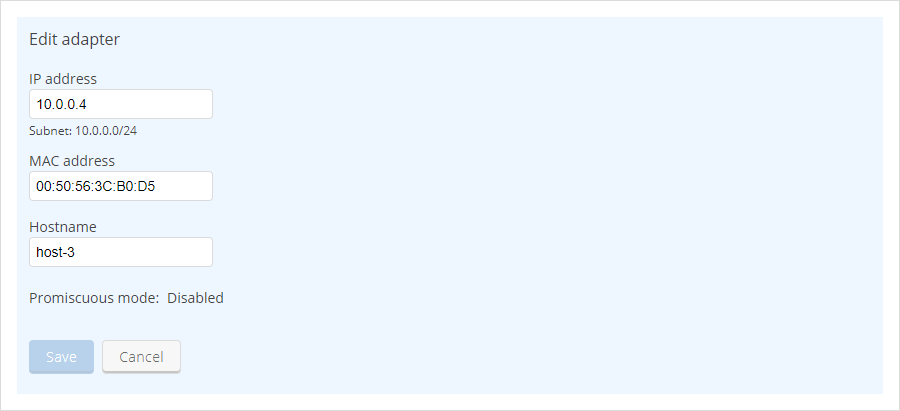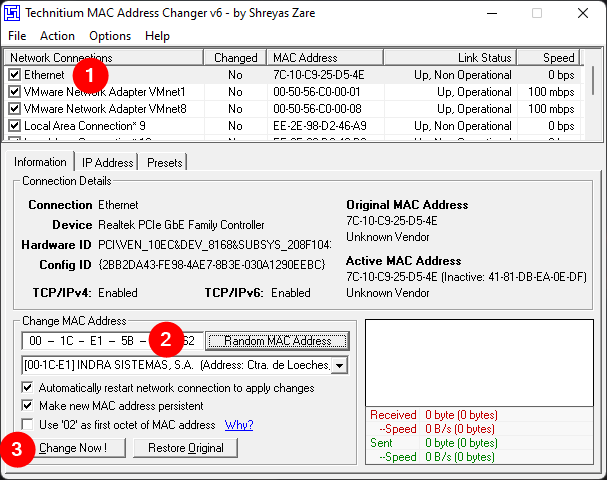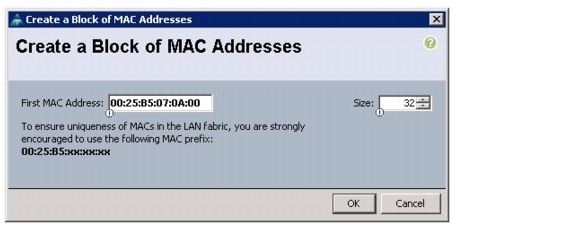

Virtual Infra address IP address of the NSX-T infra added to a Blueprint MAC Addresses MAC address of the VM connected to the AOS Fabric. Transport nodes over this Virtual network. To VM traffic in a NSX-T enabled Data Center tunnels between Port Group Name:VLAN ID The VLAN ID which NSX-T port groups are using. Leaf:Interface System ID for the interface on the leaf to which ESXi host is connectedĪnd on which VM resides. If the IP address is available on installation VM tools on the VM. If the IP address is not available this field is empty. VM IP The IP address as reported by NSX-T after the installation of VM tools.
#Vmware mac address is all zeros software
Hypervisor Version The software version of OS running on the hypervisor. Horizon Client software is pre-installed on many thin and zero clients.

#Vmware mac address is all zeros Pc
The endpoint device can be a zero client, a thin client, or a locked-down PC running either Windows or Linux. Is connected to the leaf TORs in a fabric. Kiosk mode associates a View virtual desktop with the MAC address or client ID of a kiosk endpoint device rather than with a user’s login credentials. Hypervisor Hostname The hypervisor hostname on which Virtual Machine is hosted and Hosted On The ESXi host on which Virtual Machine is hosted. VMs include the following details: VM Name The Virtual Machine name which is hosted on NSX managed hypervisor. You can also query VMs that are hosted on hypervisors connected to TOR leafs.įrom the blueprint, navigate to Active > Query and click VMs. To see a list of the VMs connected to the hypervisor, navigate to theĭashboard and scroll to fabric health for VMware option. Transport nodes in the virtual infrastructure. When you’ve successfully integrated NSX-T, you have visibility of NSX-T VMs and To add the NSX-T manager to the active blueprint. The new virtual infra manager appears in the list.Ĭlick Uncommitted (top) to see changes, then click Commit (top-right) Selected you can select a different routing zone.Ĭlick Create to create the virtual infra managerĪnd return to the list view. If VXLAN (inter-rack - when VN extends to different ToRs in the fabric) is.If VLAN (rack-local) is selected you can’t change the default routing zone.Is used in Intent-based analytics (IBA) probes Remediation Policy to expose additional fields. Select the virtual infra manager from the drop-down list, then click VLAN

When the connection is successful, the connection state changes fromįrom the blueprint, navigate to Staged > Virtual > Virtual Infra Select the virtual infra type VMware NSX-T ManagerĬlick Create to create the virtual infra manager and return to the list In the dialog that appears enter the NSX-T manager IP address (or DNS name), I can do this, but it's error prone and kind of a pain when I simply wanted to spin up a new VM to test something.We recommend that you create a user profile dedicated toįrom the web interface, navigate to External Systems > Virtual Infra Managers

Fixing this involves an arcane dance around /etc/udev/rules.d (Bonus points) On the new VM, often eth0, eth1, etc.I can't simply cut and paste the MAC into the field, so this can be an error-prone task, especially if I forget my pen and paper to write down the MAC. To fix this, I need to find the MAC address of the new VM, edit ifcfg-ethN and add this MAC to the HWADDR= field.The file /etc/sysconfig/network-scripts/ifcfg-ethN has the MAC address of the interface on the first machine. Linux doesn't know about this new MAC address and thus networking doesn't work.VMware Fusion or vCenter will assign a new MAC address to the network interface on the cloned VM.The idea is that we take the minimal VM, clone it and add more software later. This is a bare-bones VM with a minimal set of software and a functioning network stack. According to the VMware OUI allocation scheme, a MAC address has the format of 00:50:56:XX:YY:ZZ, where 00:50:56 represents the VMware OUI, XX is calculated as (80 + vCenter Server ID), and YY and ZZ are random two-digit hexadecimal numbers.Many of you are familiar with the problem, and it is described at VMware KB: " Networking does not work in a cloned Linux virtual machine (2002767). I've run into the following problem on both VMware Fusion (for Macs) and with VMware ESXi/vSphere.


 0 kommentar(er)
0 kommentar(er)
